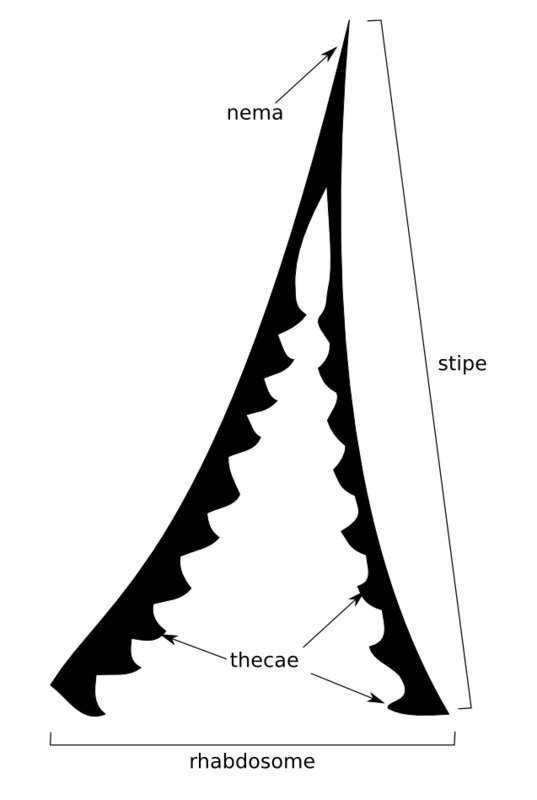- Home
- Rocks
- Type fossils
- Fossil Specimens
- Minerals
- Glossary
- Stratigraphic Chart
- Michel-Levy Chart
- Classification of igneous rocks
- University of Cambridge
- Department of Earth Sciences
- ESC Library
- Moodle
- Sedgwick Museum
- DoITPoMS
- Mindat.org
- Microfossils
- Bryozoans
- Webmineral
- Tree of Life
- CrystalMaker
- Virtual Microscope
Graptolite
Title
Graptolite
Description
Taxonomy
Phylum: Hemichordata
Class: Graptolithina
Diagnostic features
Stick-shape (often branched)
One or both edges may appear serrated
Thecae
Rhabdosome
Stipes
Stratigraphic range
Cambrian to Carboniferous (Dendroids)
Ordovician to Middle Devonian (Graptoloids)
Way of life
Colonial
Planktonic (mostly, although some dendroids were sessile benthonic)
Suspension feeders
Typical preservation
Flattened along bedding planes, normally in shales
Carbonization or pyritization of the animal
Learn about types of preservation
Advanced notes
Graptolites, because of their abundance and variation in morphology are very good index fossils. At a very basic level the angle between the stipes and number of stipes can be used to give a rough age for the fossil, with Early Ordovician graptolites having two stipes with the 'sawtooth' facing each other (pendent), later Ordovician graptolites having a more open oblique or reflex angle between the 'sawtooth' faces, and Siluran graptolites having the 'sawtooth' faces back to back (scandent) or having lost one stipe altogether (for example monograptids).
Specimens
Collection
Citation
“Graptolite,” 1A Collections, accessed April 9, 2024, https://wserv3.esc.cam.ac.uk/p1acollections/items/show/114.


